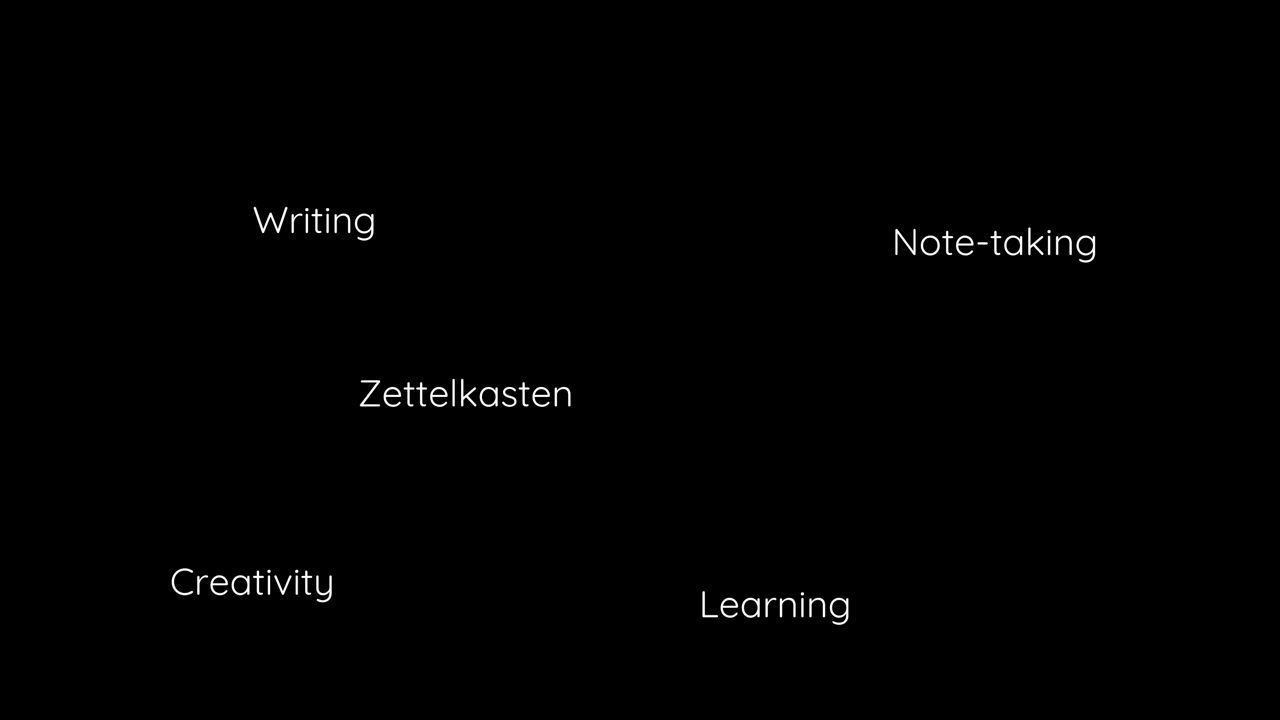
What is a Zettelkasten? (and why every creative should have one)
Nov 29, 2024Originally published October 2, 2023
If you are a creative (or a thinker / learner / researcher / teacher),
if you want to write, develop your own ideas, create your own work…
1. You need to take notes.
But to get anywhere from a pile of notes, you also need something else:
2. You need a system.
A system
- that actually works in practice and in the long term. One which allows you to build on ideas years and years into the future
and
- that helps you to produce original work, not just capture ideas.
“The more thoughts you write down the more interesting thoughts you will get"
To get hold on what speaks to you ⎼ what matters to you, you need to take notes. And to work with those ideas and thoughts in a tangible way, you must first write them down.
Inspiration and thoughts are fleeting. Unless we are committed to acknowledging them they will escape us.
A note-taking practice trains our brain to stay alert and curious⎼ making us more creative.
Is your creativity homeless?
Your creativity deserves a proper home. A functioning house⎼ a space where it can truly thrive. How else could it ever truly flourish?
To build on your ideas in a meaningful way, you need a consistent and reliable structure for your creative work.
When your creative work lives in an organized system, you can take breaks without worrying about losing the thread. You'll feel less anxious and and you can simply focus fully on the task at hand.
With a system you trust, you'll need less willpower to get things done. It minimizes resistance and helps you work with ease and clarity.
Enter Zettelkasten
That is exactly what Zettelkasten is. A note-taking system that houses all of your inspiration, ideas and project material.
A Zettelkasten (meaning “slip box” or “note box” in German) is the structure that births next level creativity, idea generation and productivity.
How does the Zettelkasten method work?
Here are some of the core principles (and what sets it apart from other note-taking methods):
First, Zettelkasten notes are atomic. This means that you should only recorded one idea per note.
Second, instead of having a predetermined hierarchical structure the system is organic. Why? Because the relationship between ideas matters just as much as the content of notes. Therefore, “where notes are placed in the system” is determined based on how they connect (content-wise) to other pieces of information in your Zettelkasten.
In practice, this is done with references and/or links. As a result, you will have a mass of interconnected ideas instead of isolated facts. This allows for easier and more fruitful development of ideas.
And finally, as you can see in the picture below, everything is streamlined towards your own publishable work. From consumption to creating ⎼ creating being the goal.
Creative workflow with Zettelkasten: Consumption -> Note-taking -> Synthesizing -> Creating.
The system is built on 4 types of notes:
1. Fleeting notes
- These are quick records of thoughts and ideas you come across in your daily life. Every once in a while, go through these notes and further digest the most important ones into literature or permanent notes, and discard the rest.
2. Literature notes
- These are longer format notes, containing multiple ideas on a specific source material such as a book, an article, a podcast or a course.
3. Permanent notes
- These are the notes that you want to keep, making up the core of your system. These notes should be concise, understandable in isolation and written in your own words. Only one idea per note.
4. Projects
- These can be anything you are working on: videos, courses, articles. Your art.
You can eitehr build an analog Zettelkasten using index cards & boxes or implement the system in digital format and use a software tool like Obsidian which is what I use.
In a digital Zettelkasten the organization of notes is done with bidirectional linking and on paper using a numbering system.
Imagine having half of your book written before starting
If you ask me, you get to experience the benefits of the Zettelkasten almost immediately after beginning. But the true magic lies in its compounded effect.
After working with mine for two years, I caught a glimpse of this:
It started with a new idea I had for a new big project. After putting all my initial thoughts on the paper I decided to go through my Zettelkasten.
Goosebumps. What I found was not the couple semi-useful ideas I suspected to find, but TONS of related notes I could immediately apply for my new project. There were multiple notes speaking to exactly what I was planning to create. Thoughts and ideas I had even forgotten I had recorded.
It was like I had been committedly working on this very project, even before conceiving the idea of it. Safe to say I’ve ever felt so productive in my life!
Get started
There are tons of resources online to help get you started on your Zettelkasten.
Hot tip: try to not get sucked into the rabbit hole of trying to figure out the best or the most correct way of doing Zettelkasten. Just start building your own system as fast as possible and learn along the way.
If you want to get a better grasp of Zettelkasten and why it works, I recommend:
Bob Doto (book): System for writing
Sönke Ahrens (book): How to Take Smart Notes
Vicky Beeamp (video): Zettelkasten Method Explained: A Beginner’s Guide
PS. I’m happy to discuss anything Zettelkasten. Feel free to send me a mail or message me on Instagram.



